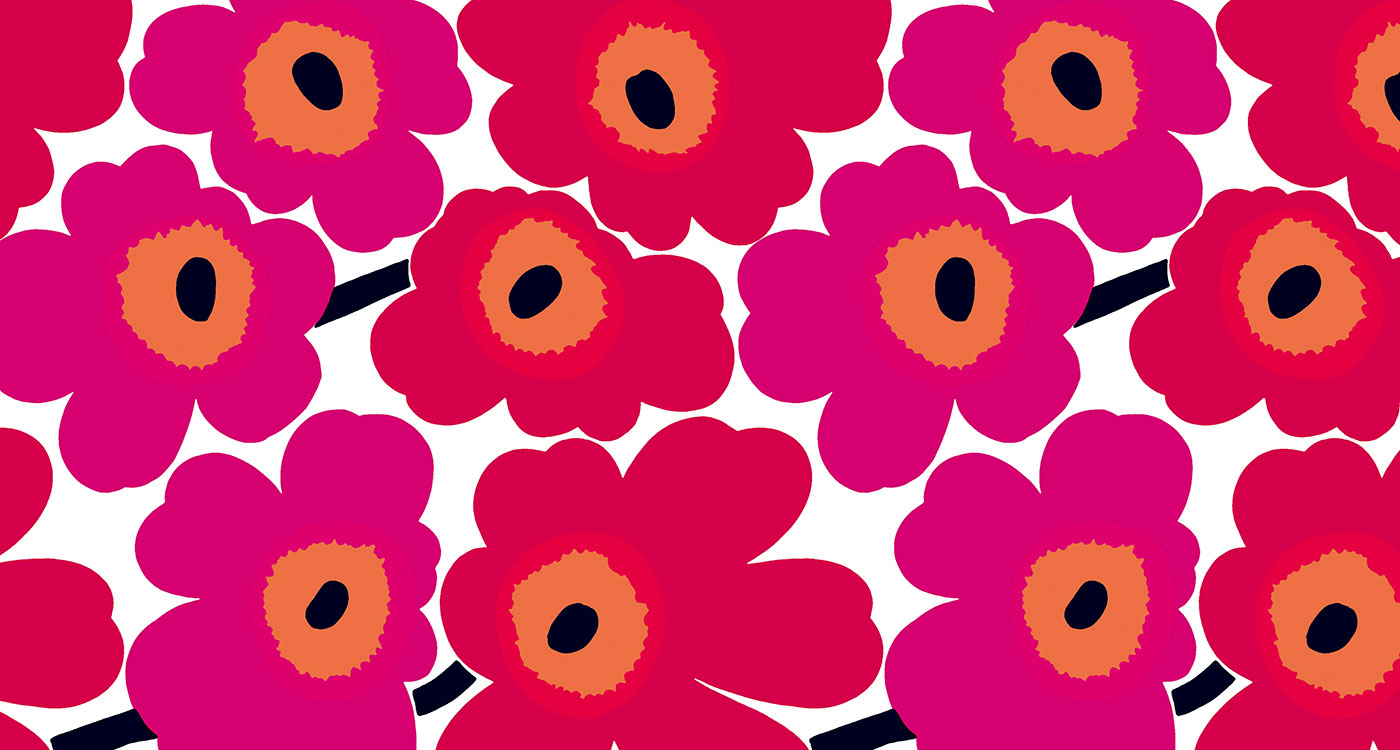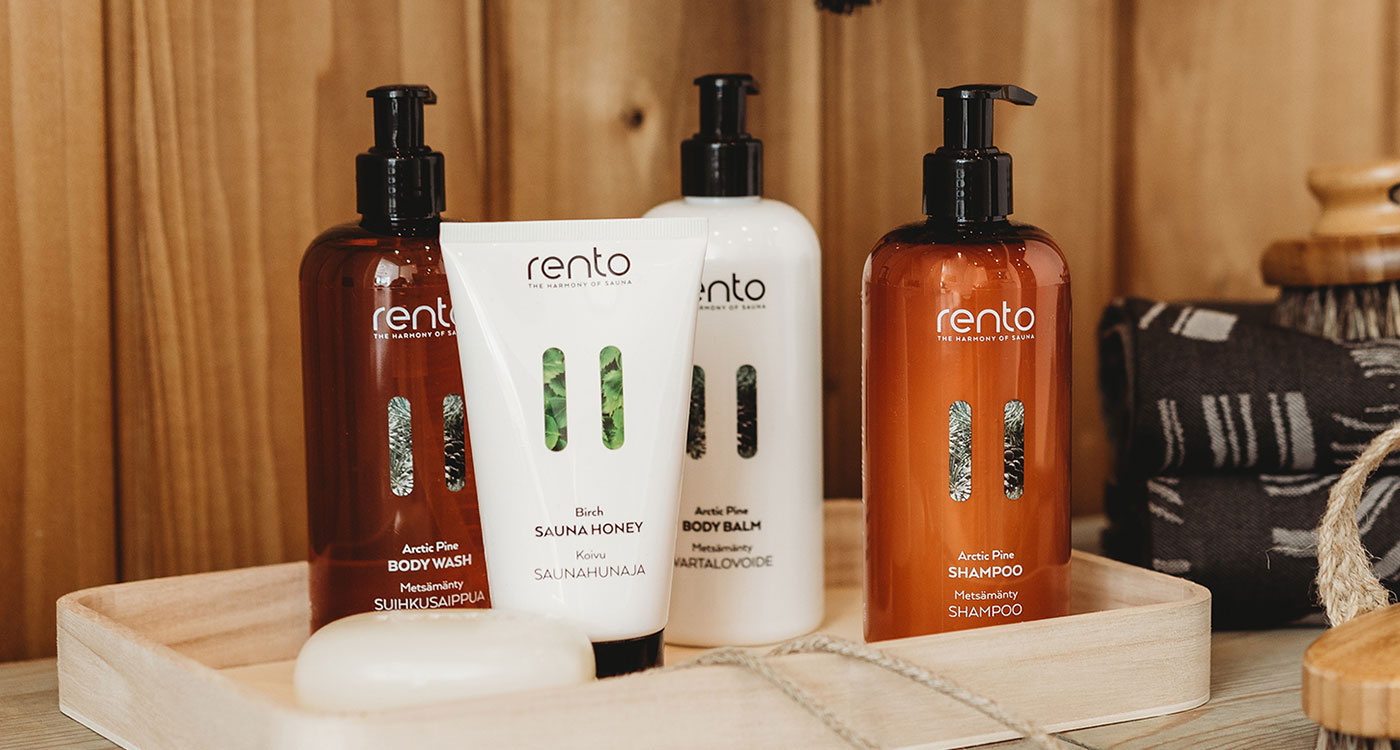Finnish company Marimekko is most known for its colorful patterns; in fact, the bold prints of Marimekko are the first to come to mind for many when thinking about Finnish design. Marimekko patterns started in 1949, when Armi Ratia recruited young artists to bring a strong voice to her husband’s Helsinki-based textile printing company, Printex. To give the unique patterns her team was creating exposure, Ratia organized a fashion show where the pieces sold on the spot. Just five days later, on May 25, 1951, Marimekko was officially registered as a company. Today, the Marimekko patterns extend beyond textiles, appearing on other home decor items such as dinnerware, too.
Marimekko has made countless patterns since then, but here are some of the most famous, icon, and influential Marimekko patterns:
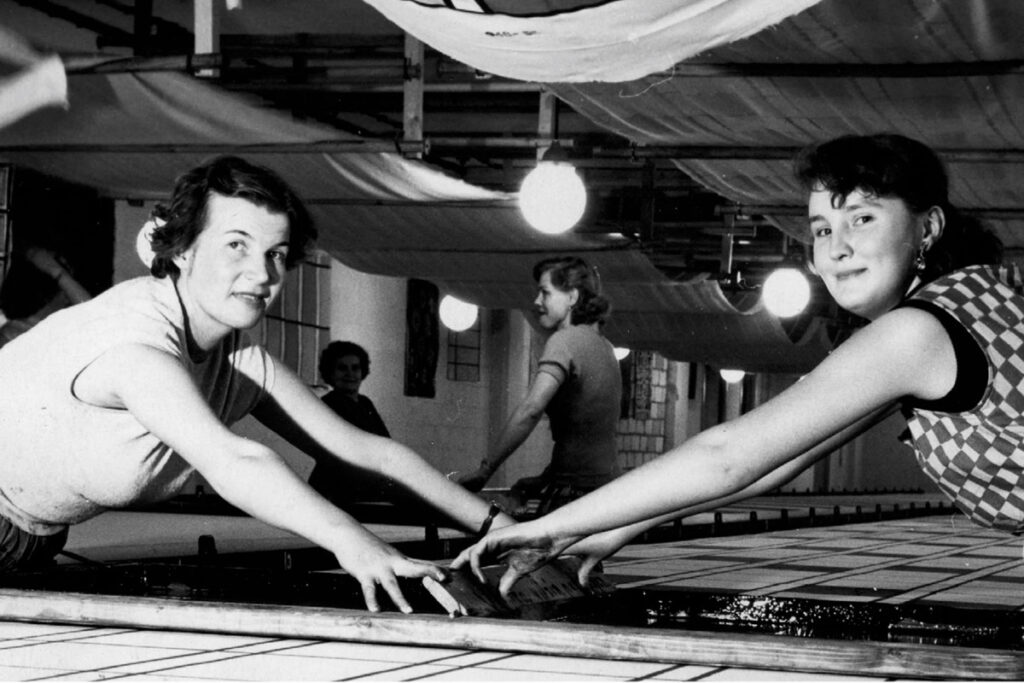
Unikko
Despite Marimekko founder Armi Ratia saying she did not want floral Marimekko patterns a part of the company’s collection, designer Maija Isola presented her with a range of flower prints. Among them? The 1964 poppy print named “Unikko,” which remains to this day most widely recognized and sought after of the Marimekko patterns.

Kivet
Maija Isola also designed the Kivet (Stones) pattern, which is still seen on many Marimekko products today. She created the design by cutting out pieces of colored paper with scissors to obtain jagged, imperfect edges. It is speculated that these were inspired by the rough-edged rocks that were found outside the artist’s studio home.
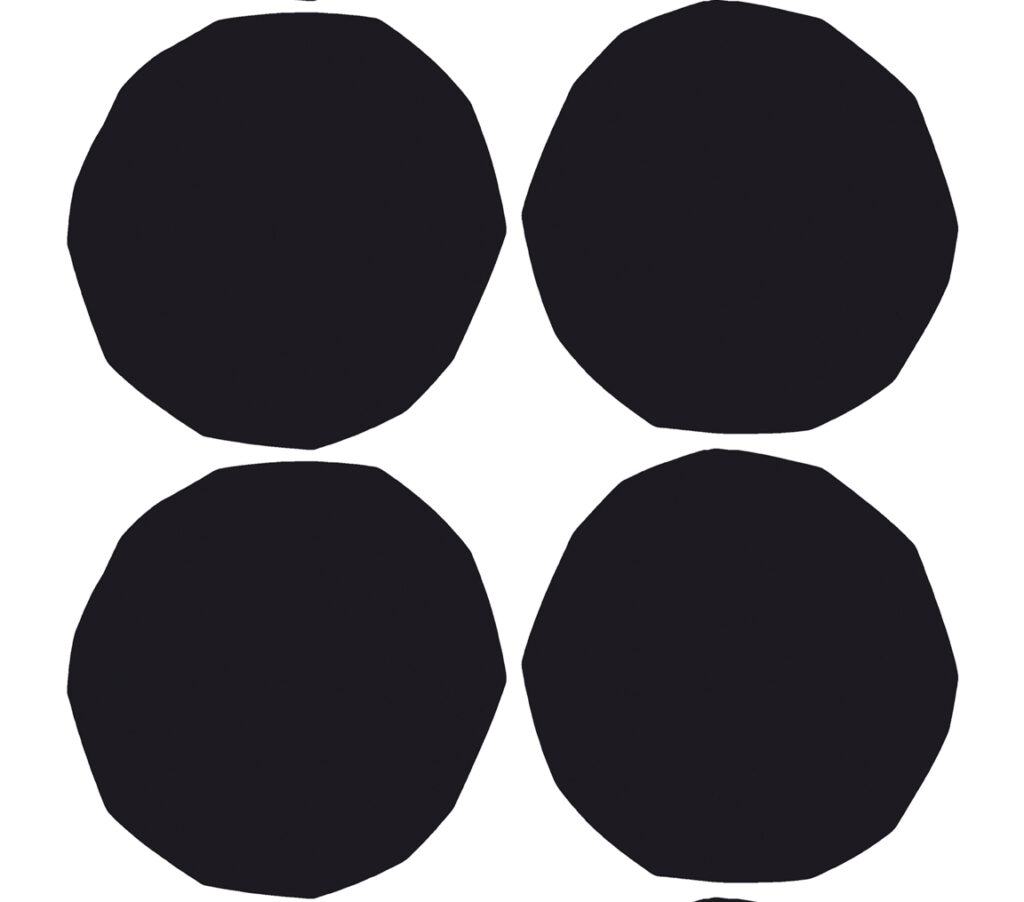
Kaivo
Marimekko Kaivo (Well) is another classic black and white design by Maija Isola, though it’s been revamped in a number of colorways. It too has an interesting backstory; Maija Isola once dropped a pail in a well and was mesmerized by the rings that formed on the water’s surface. Kaivo is her minimal and modern interpretation of this pattern found in nature.
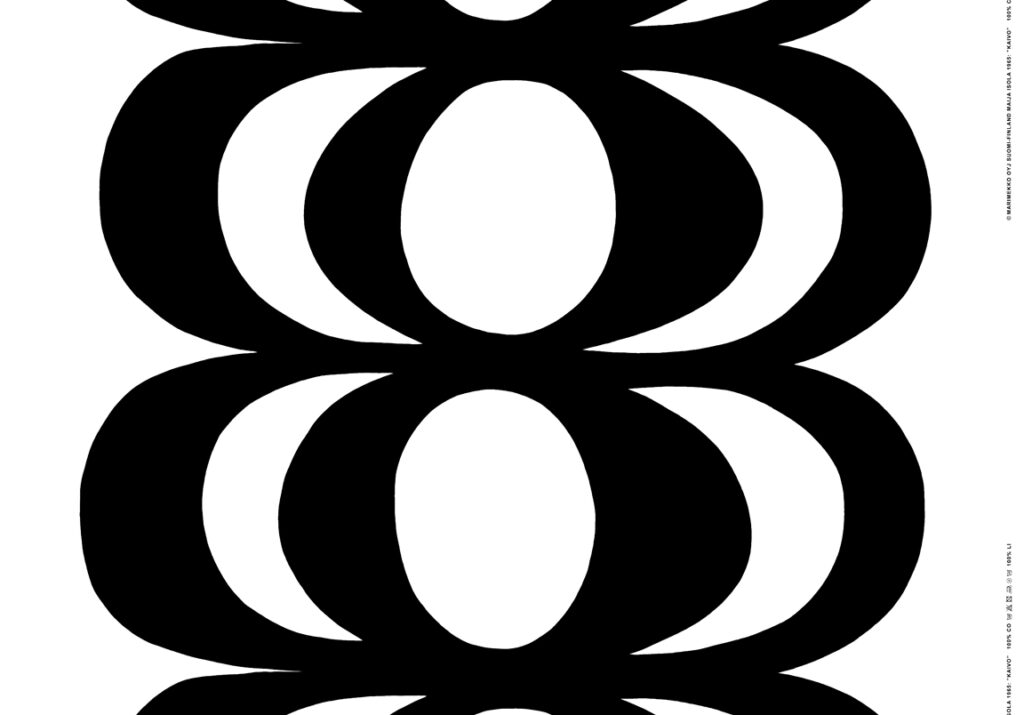
Jurmo
With rocks also as a muse, Jurmo is a Marimekko pattern by artist Aino-Maija Metsola. Jurmo is a Finnish island that she visited on a sailing trip, where the crashing of the waves created the smooth and round stones that inspired this pattern. It is a favorite for bedding, as the peaceful pattern creates a meditating effect on the space for resting and reflecting.
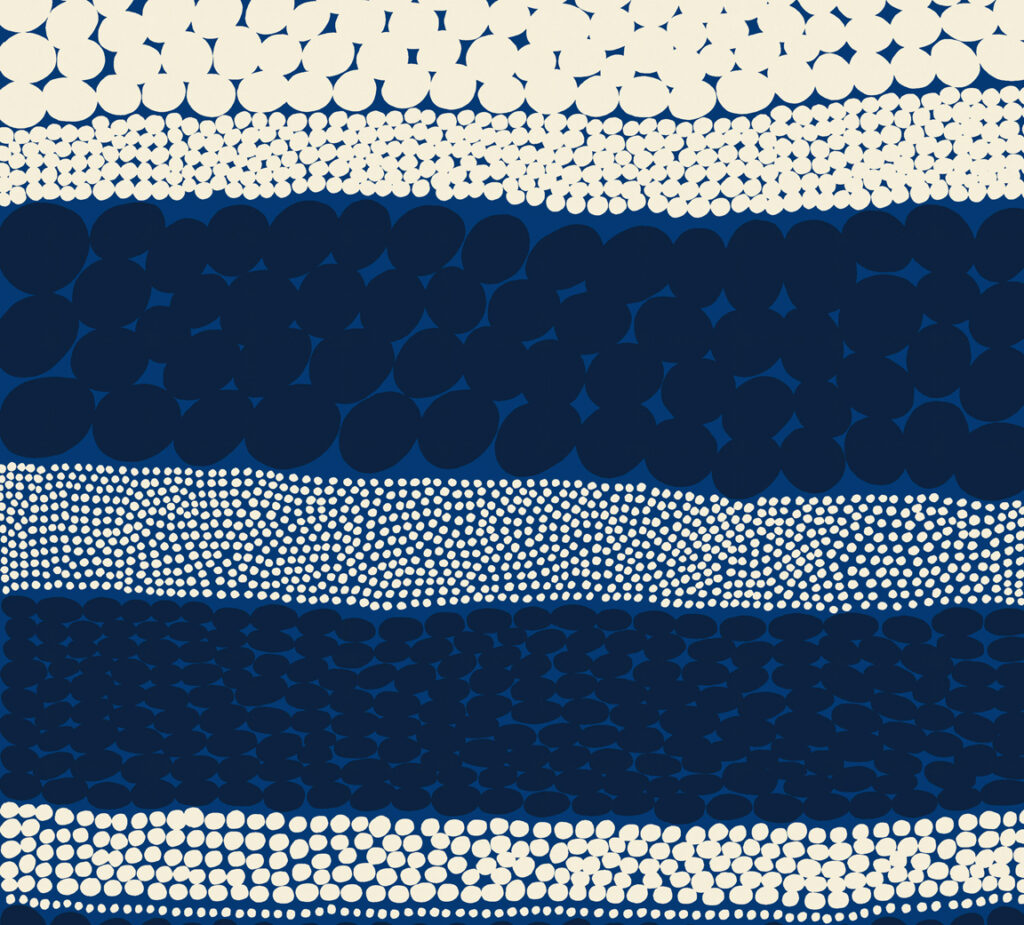
Joonas
Maija Isola’s fascination with water is also evident in the iconic Joonas pattern. She designed it after a visit to the Mediterranean Sea, where she was awestruck by the shapes the sun made as it reflected off of the warm salt water. To re-enforce this water theme, Isola named this Marimekko pattern Joonas or Jonah in English after the Old Testament story of the man who was swallowed by the whale.

Lokki
You may be sensing a theme with Marimekko patterns; many of them draw inspiration from nature. Maija Isola’s Lokki (Seagull) pattern has also become an iconic staple in Marimekko’s continuing collection. As the name suggests, it depicts the shape of a birds wings as it flies over the ocean. It also is often seen in black in white, but when it gets a pop of color like yellow, it gives off a “beachy” vibe. The design was also executed by cutting colored paper with scissors (we bet they were Fiskars). Other accounts say the artist was also inspired by the wave-like shadows that formed from her curtain in sun-drenched window. What do you see when you look at Lokki?
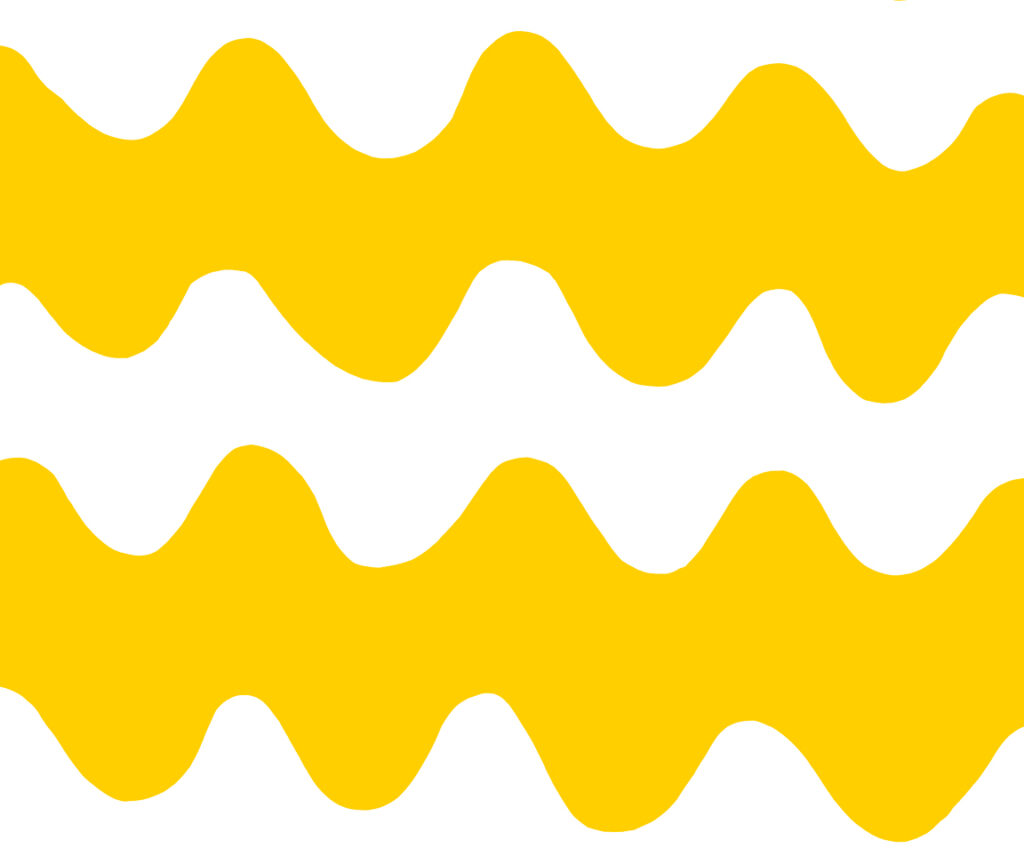
Lumimarja
Since its introduction in 2004, Lumimarja (Snowberry) by Erja Hirvi has become a popular Marimekko pattern in winter and beyond. It depicts the real-life snowberry shrub in an intricate yet still modern fashion. It has graced pillows, tablecloths, and fabric – often crafted into curtains and wall hangings to enjoy its beauty in an impactful and large-scale installation.
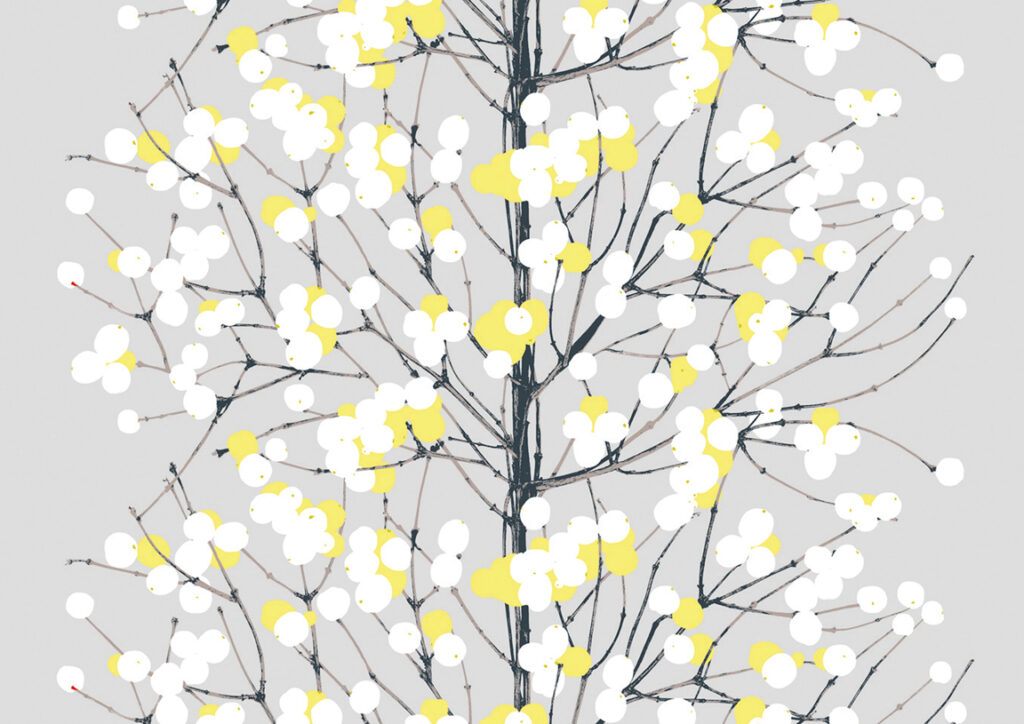
Kaiku
This pattern is also based off a plant: the birch tree. Finland’s national tree, it is easily recognized by it’s white, marked bark which fills the forests of Finland. The Kaiku (Echo) design by Maija Louekari paints a beautiful and serene scene. The pattern has graced many Marimekko products, but it’s most popular was a shower curtain that even appeared on the TV Show “Modern Family.”
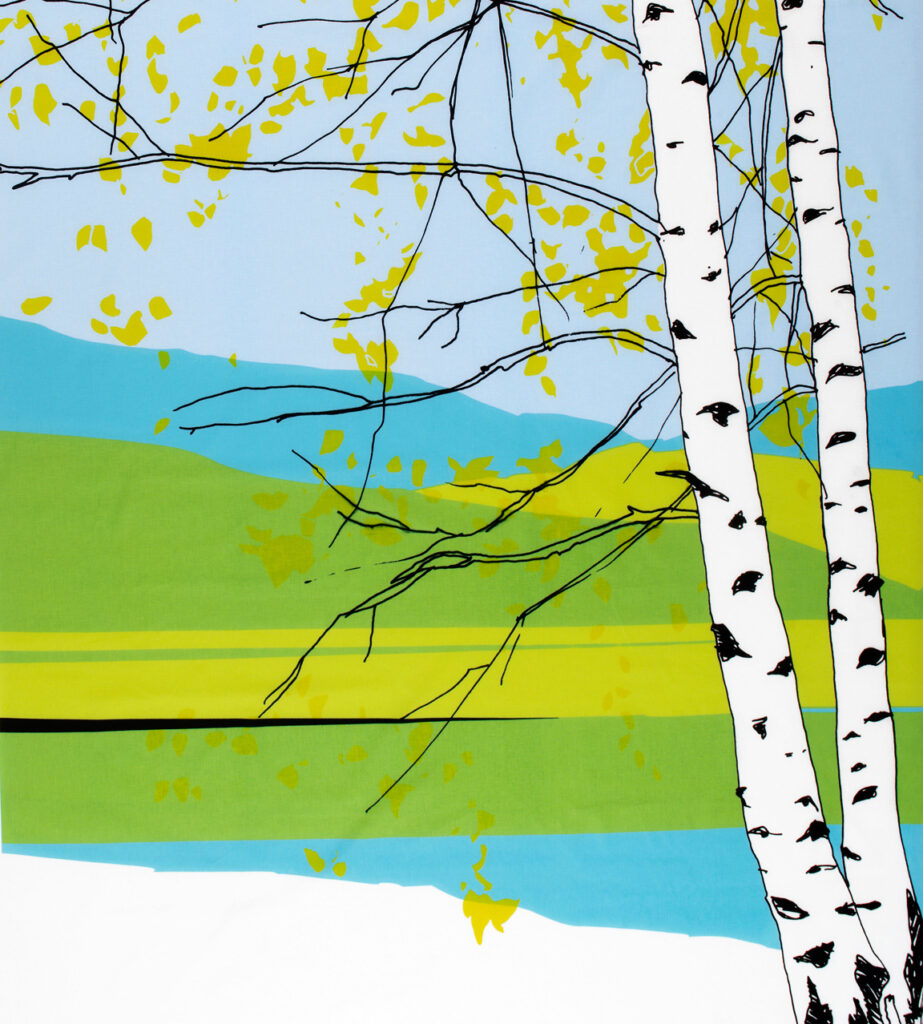
Tuuli
Maija Isola also channeled for love for trees with the Tuuli (Wind) print. As the name suggests, Isola was inspired by the way the leaves rustle in the breeze to create a stunning silhouette. She saw this at a park in Paris, where she lived for some time during the 1960s. One tree had a special meaning for her, and she snapped a picture. The photograph she then turned into this striking Marimekko pattern.
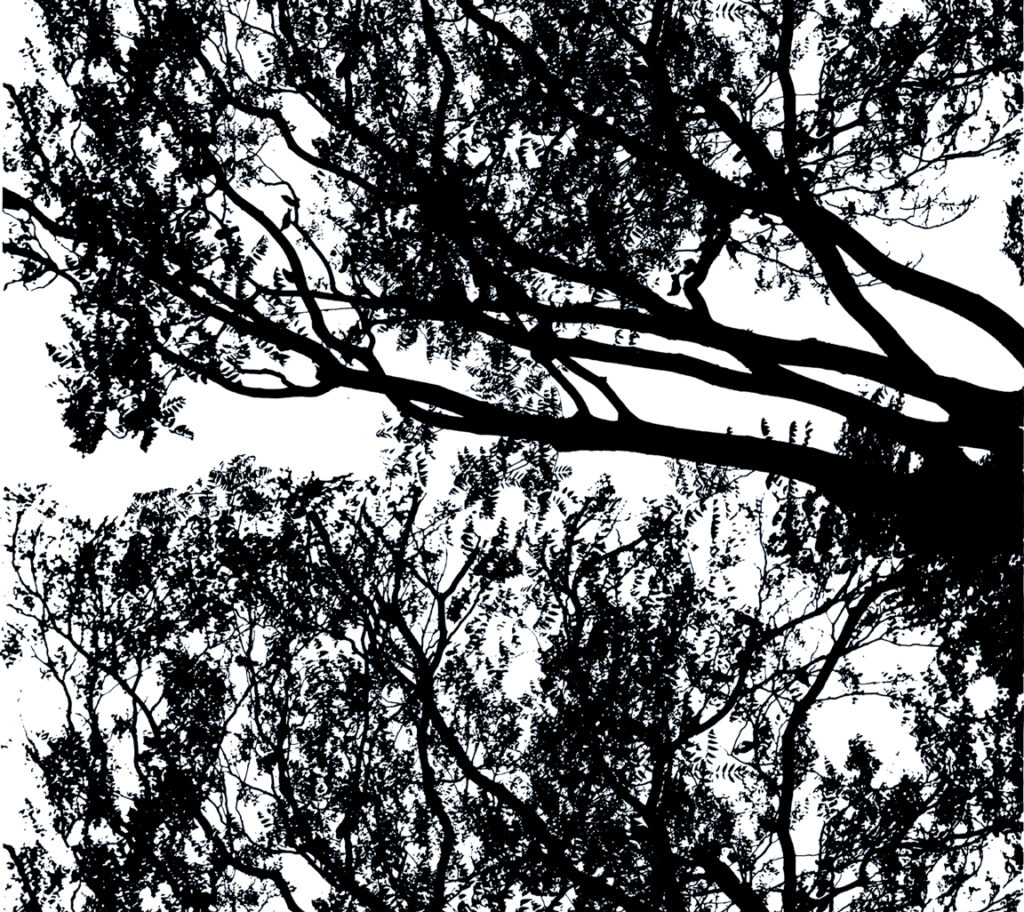
Bo Boo
A playful departure for nature inspirations, Katsuji Wakisaka‘s Bo Boo pattern features zooming cars, trucks, and buses. It’s become a favorite among many Marimekko fans for nurseries, playrooms, and childrens’ bedrooms. The primary colors and recognizable shapes are perfect for capturing the attention of young ones but have resonated with the hearts of all ages.
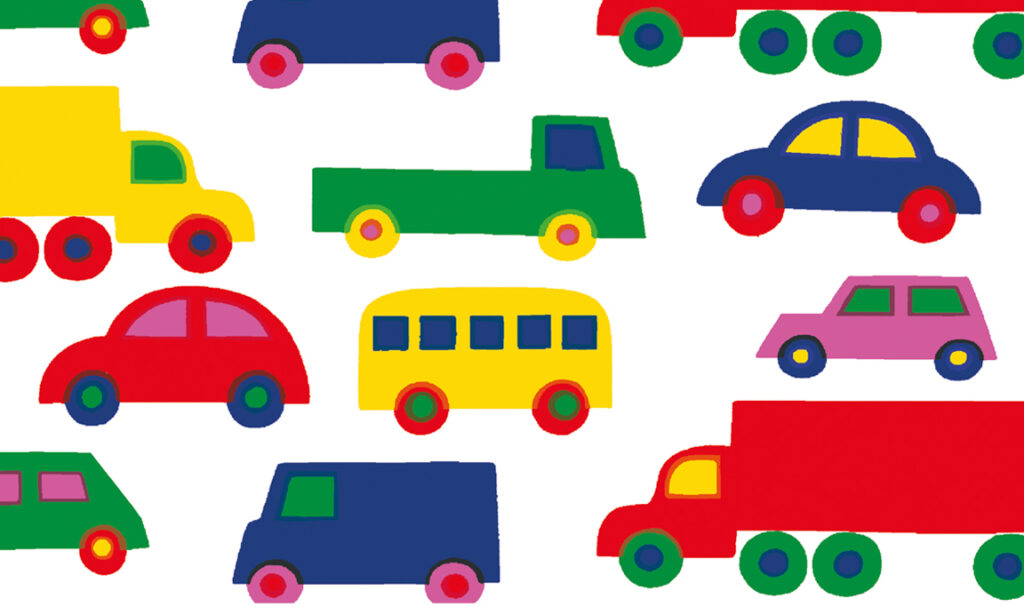
What is your favorite Marimekko pattern? Comment and let us know below!


